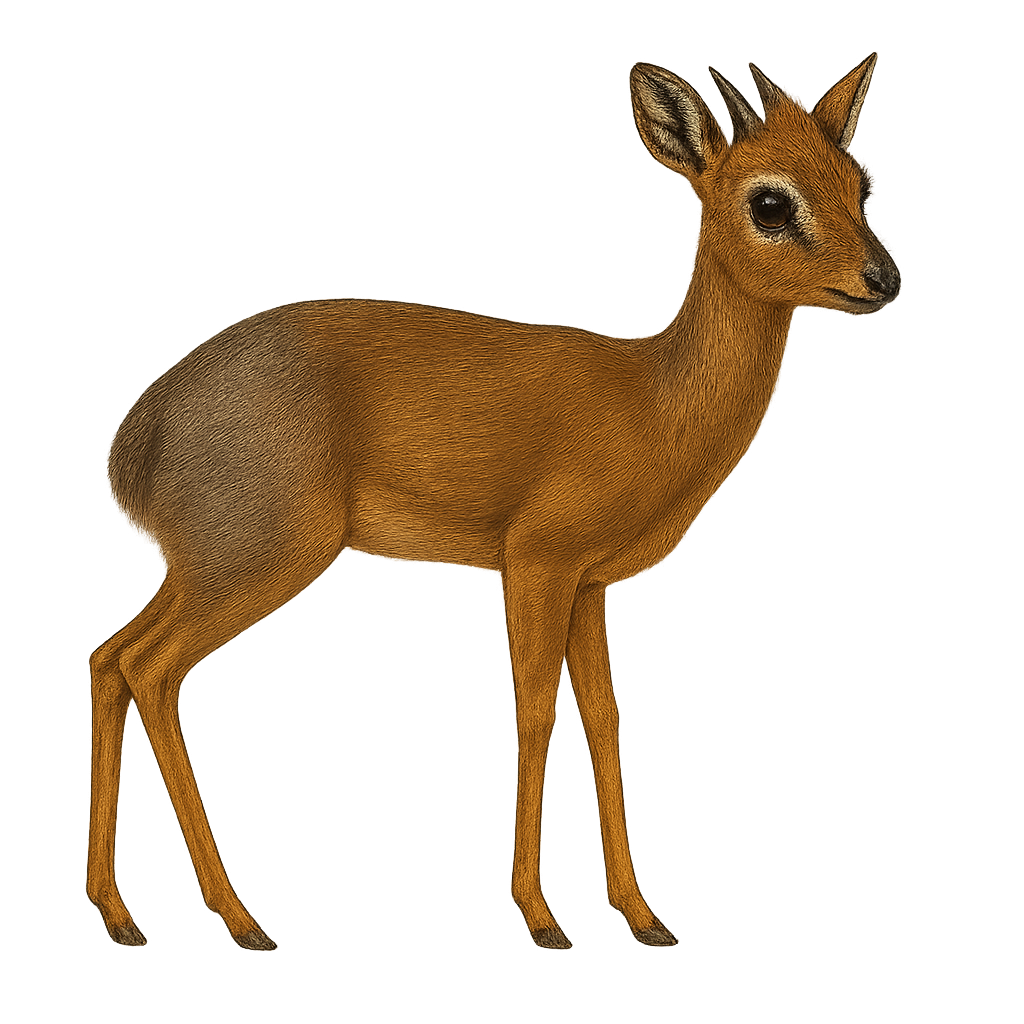Your wildlife photography guide.
Explore the kirk's dik-dik in detail, study its behavior, prepare your shots.
Where to observe and photograph the kirk's dik-dik in the wild
Learn where and when to spot the kirk's dik-dik in the wild, how to identify the species based on distinctive features, and what natural environments it inhabits. The WildlifePhotographer app offers tailored photography tips that reflect the kirk's dik-dik’s behavior, helping you capture better wildlife images. Explore the full species profile for key information including description, habitat, active periods, and approach techniques.
Kirk’s Dik-dik
Scientific name: Madoqua kirkii

IUCN Status: Least Concern
Family: BOVIDAE
Group: Mammals
Sensitivity to human approach: Suspicious
Minimum approach distance: 30 m
Rut period: April to June
Gestation: 170-180 jours
Births: September to November
Habitat:
Wooded savannas and rocky hills
Activity period :
Primarily active during the day, with peak activity in the morning and late afternoon.
Identification and description:
The Kirk's Dik-dik is a small antelope, recognizable by its modest size and distinctive features, including its elongated snout and large, expressive eyes. Standing about 40 cm tall at the withers and weighing between 3 and 6 kg, it is one of the smallest members of the antelope family. Its coat is usually light brown or gray, with a paler belly and distinct facial markings. The Kirk's Dik-dik primarily inhabits savannas and wooded areas in East Africa, notably in Somalia, Kenya, Tanzania, and Ethiopia. It feeds mainly on leaves, fruits, and herbaceous plants. This small herbivore is mostly active at dusk and during the night, using its well-developed sense of smell to detect predators, emitting a characteristic call to alert other members of its group. The Kirk's Dik-dik is typically solitary or lives in small family groups. Although it is not currently threatened, it faces dangers such as habitat loss due to agricultural expansion and hunting.
Recommended lens:
400 mm – adjust based on distance, desired framing (portrait or habitat), and approach conditions.
Photography tips:
Approach slowly and discreetly, using a telephoto lens to avoid disturbing the Kirk’s dik-dik — a small, highly alert antelope that can quickly flee at the slightest disturbance.
Photograph early in the morning or late in the afternoon, when the light is soft and the dik-dik is more active, often foraging among bushes, shrubs, or tall grasses.
Capture moments of natural behavior: Kirk’s dik-dik is typically seen alone or in pairs, cautiously moving through its surroundings. Be patient and wait for it to emerge from cover to get authentic shots.
Be respectful and stay quiet: This discreet animal is easily disturbed. Avoid sudden movements and give it the space it needs to behave naturally.
Kirk’s dik-dik is classified as Least Concern, but it is essential to respect its natural habitat and minimize human disturbance, especially during feeding or breeding times. Follow local conservation guidelines to help preserve this species and its fragile ecosystem.
The WildlifePhotographer App is coming soon!
Be the first to explore the best nature spots, track rutting seasons, log your observations, and observe more wildlife.
Already 1 430 wildlife lovers subscribed worldwide

